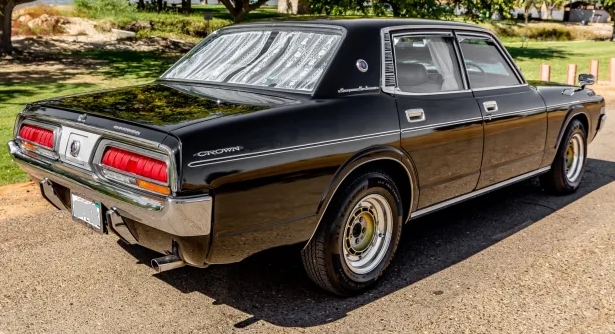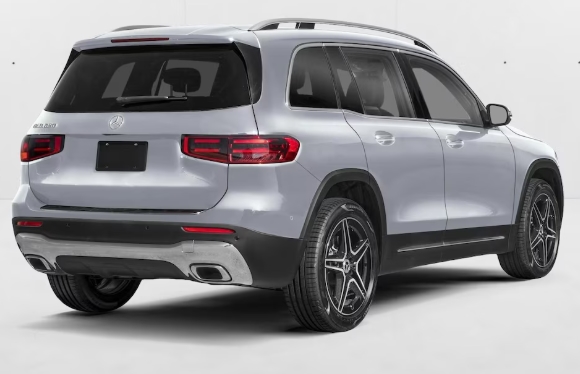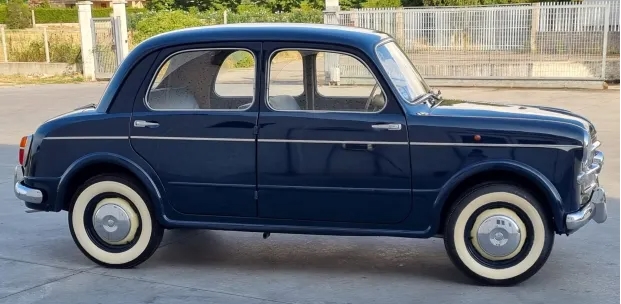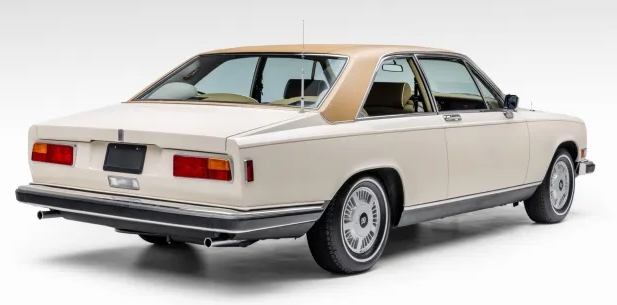The Crown Jewel of Toyota: Tracing the Evolution of an Enduring Icon- The Toyota Crown
For over seven decades, the Toyota Crown has occupied a unique and revered position within the automotive landscape. It’s not just a car; it’s a symbol of Toyota’s commitment to quality, comfort, and a sophisticated approach to personal mobility. From its humble beginnings as a post-war executive sedan to its current, surprisingly avant-garde iteration, the Crown’s journey is a fascinating testament to adaptation, enduring values, and a willingness to embrace change while staying true to its core identity. This article will delve into the rich history of the Toyota Crown, exploring its generational evolution, the diverse models and trim levels it has offered, and the enduring legacy that has cemented its status as the “Crown Jewel” of Toyota.
The Genesis: A Post-War Symbol of Progress (1955-1961) – The First Generation (RS)
The story begins in the aftermath of World War II, as Japan embarked on a path of recovery and industrial resurgence. Toyota, a burgeoning automaker, recognized the need for a dignified and robust vehicle that could cater to the growing demands of professionals, business executives, and government officials. Introduced in 1955, the first-generation Crown, codenamed RS, was a revelation. It was Toyota’s first car to feature a unibody construction, a significant departure from the body-on-frame designs prevalent at the time, contributing to a more refined ride and improved handling.
The initial Crown was powered by a 1.5-liter Type R engine, producing around 48 horsepower. It was designed with a distinctive, albeit somewhat utilitarian, body style that emphasized practicality and durability. While comprehensive trim level information from this early era is scarce by modern standards, the Crown was generally offered in sedan and station wagon variants. The focus was on delivering a comfortable and reliable transportation solution for the burgeoning Japanese middle class and its leaders. The Crown quickly established a reputation for its solid build quality and its ability to withstand the often-challenging road conditions of the era.
Refinement and Expansion: Growing with Japan (1962-1967) – The Second Generation (S40)
The second generation Crown, launched in 1962 (S40), marked a significant step forward in design and engineering. Inspired by American styling cues, it adopted a more elegant and streamlined appearance, featuring a prominent grille and a more spacious interior. This generation also saw the introduction of a more powerful engine option: the 1.9-liter Type F inline-four, offering a welcome boost in performance.
The S40 Crown was produced in several body styles, including the familiar sedan and a more luxurious estate. Within the sedan, various trim levels began to emerge, though official nomenclature can be complex and varied by market. Common distinctions were made between standard models and those with enhanced features, often denoted by suffixes or appellations that indicated a higher grade of interior appointments, such as upholstered seats (instead of simpler vinyl), improved carpeting, and additional chrome accents. This generation solidified the Crown’s position as a premium offering, catering to a discerning clientele.
The Global Stage and Diversification: Embracing Individuality (1967-1971) – The Third Generation (S50)
The third-generation Crown (S50), introduced in 1967, was a pivotal moment, marking its significant expansion into international markets. This generation further refined the styling, with a more sophisticated and mature aesthetic. Under the hood, Toyota offered a wider range of engine options, including the 2.0-liter Type M inline-four and, for the first time, a V6 engine – the 2.3-liter Type 3M. This broader engine choice allowed the Crown to cater to different performance expectations and regulatory environments.
The S50 generation saw a more distinct diversification of models. Alongside the sedan and wagon, a two-door hardtop coupe variant was introduced, injecting a sportier and more personal appeal into the Crown lineup. This hardtop was a particular success, appealing to a younger demographic and showcasing the Crown’s versatility. Trim levels on the S50 became more clearly defined, with designations like “Super Deluxe” or “Deluxe” indicating varying degrees of interior luxury, power steering, and air conditioning. The “Custom” trim often denoted the station wagon.
The Golden Age of Comfort and Technology: A Luxury Leader (1971-1975) – The Fourth Generation (S60)
The 1970s saw the Crown solidify its reputation as a benchmark for comfort and refinement. The fourth generation (S60), launched in 1971, embodied this ethos. Its design was characterized by a more imposing presence, featuring a distinctive horizontal grille and a more upright stance. Toyota continued to push the boundaries of technology, equipping the Crown with features like power windows, automatic transmission, and air conditioning as increasingly common options.
Engine options for the S60 generation included the 2.0-liter Type M and the larger 2.3-liter Type 3M. The Crown continued to offer sedan, hardtop, and wagon body styles. Trim levels became more elaborate, with names like “Super Saloon” and “Royal Saloon” signifying the pinnacle of Crown luxury. These top-tier trims often included features such as leather upholstery, woodgrain interior accents, and advanced sound systems. The S60 generation was a resounding success, cementing the Crown’s status as a desirable executive car both domestically and in export markets.
Embracing the Malaise Era and Beyond: Enduring Values (1975-1983) – The Fifth (S80) and Sixth (S100) Generations
The mid-to-late 1970s and early 1980s presented the automotive industry with challenges, including the oil crisis and stricter emissions regulations – often referred to as the “malaise era.” The fifth generation Crown (S80), introduced in 1975, reflected these times with a more squared-off, fuel-efficient design. Engine options focused on smaller, more economical units, though larger engines remained available for export markets.
The S80 generation continued the sedan and hardtop body styles, with the wagon being phased out in some markets. Trim levels like “Super DX” and “Super Twin Cam” offered varying levels of luxury and performance.
The sixth generation, a significant leap forward, arrived in 1979 (S100). This generation saw a more aerodynamic and modern design, with a sleeker profile. Engine options became more sophisticated, with the introduction of fuel injection and the continued availability of larger displacements, including inline-six engines. This generation also saw the return of the estate wagon in some markets.
The S100 generation is notable for its refined trim levels. “Super Select” and “Royal” designations continued to denote premium offerings, often featuring advanced electronic amenities, enhanced suspension systems, and more opulent interior materials. This generation further honed the Crown’s reputation for smooth ride quality and exceptional build integrity.
The Digital Age and New Horizons: Innovation and Global Reach (1983-1999) – The Seventh (S120), Eighth (S130), Ninth (S140), and Tenth (S150) Generations
The period from the mid-1980s to the turn of the millennium witnessed the Crown embracing technological advancements and expanding its global footprint even further.
Seventh Generation (S120, 1983-1987): This generation marked a significant stylistic shift towards more angular and contemporary lines. It introduced advanced features like electronically controlled suspension and digital displays. Engine options continued to evolve, with powerful inline-six engines becoming a hallmark. The hardtop and sedan remained, and trim levels like “Super Custom” and “Royal Saloon G” exemplified the growing luxury.
Eighth Generation (S130, 1987-1995): The S130 generation continued to refine the S120’s formula, with an even more sophisticated and elegant design. It saw further technological integration, including sophisticated infotainment systems. The Crown continued to offer sedan and hardtop variants. Trim levels like “Royal Touring” and “Athlete V” (a sportier variant) highlighted the broadening appeal of the Crown. The ultra-luxurious “Majesta” sub-model was also introduced during this era, catering to the absolute elite.
Ninth Generation (S140, 1995-1999): This generation introduced a more rounded and aerodynamic styling. It continued to offer performance-oriented models alongside comfort-focused variants. Sedan and hardtop were the primary body styles. Trim levels like “Royal” and “Athlete” remained central, with variations denoting engine size and feature sets.
Tenth Generation (S150, 1999-2003): The S150 generation introduced a more modern and somewhat bolder design for the time. It continued the emphasis on comfort and technology. Engine options remained robust. The hardtop was phased out in favor of a more traditional sedan. Trim levels like “Lexus-like” names such as “Royal” and “Athlete” continued to signify different levels of luxury and sportiness.
The 21st Century Crown: Embracing Modernity and Shifting Market Demands (2003-Present) – The Eleventh (S180), Twelfth (S190), Thirteenth (S200), Fourteenth (S210), and Fifteenth (S220) Generations
As the 21st century unfolded, the Crown continued to adapt to changing market trends and consumer preferences.
Eleventh Generation (S180, 2003-2008): This generation was a radical departure in styling, featuring a more aggressive and sculpted design. It embraced advanced safety technologies and improved fuel efficiency. The “Athlete,” “Royal,” and the performance-focused “Hybrid” variants became prominent.
Twelfth Generation (S200, 2008-2012): Building on the S180’s success, the S200 generation further refined the sporty and luxurious aesthetic. It introduced more powerful hybrid powertrains and advanced driver-assistance systems. The “Athlete” and “Royal” lines continued, with various engine and trim combinations.
Thirteenth Generation (S190, 2012-2018): This generation saw a return to a more understated elegance, blending sportiness with classic Crown comfort. It emphasized advanced hybrid technology and a refined driving experience. Dedicated “Athlete” and “Royal” trims continued, with an emphasis on comfort and performance options.
Fourteenth Generation (S210, 2018-2020): The S210 generation pushed the boundaries of Crown design with a more expressive and athletic appearance. It featured advanced infotainment and connectivity features. The “Athlete” and “Royal” designations remained, with hybrid powertrains being a significant focus.
Fifteenth Generation (S220, 2018-2022): This generation continued the trend of sporty and technologically advanced design. It heavily emphasized hybrid powertrains for improved efficiency and performance. Trim levels like “RS” (representing a sportier variant) and “G” (representing a more luxurious variant) became common.
The Crown Reimagined: A Bold New Chapter (2022-Present) – The Sixteenth Generation (S235/S236)
The latest iteration of the Toyota Crown, launched in 2022, represents the most dramatic evolution in its history. Gone is the traditional sedan, replaced by a multi-body style lineup that includes a crossover SUV, a sportier crossover, a liftback sedan, and a traditional sedan. This bold move reflects Toyota’s strategy to broaden the appeal of the Crown nameplate to a wider audience and adapt to the changing global automotive market.
The S235/S236 generation is characterized by its striking, futuristic styling and a heavy reliance on hybrid and plug-in hybrid powertrains. The trim levels now reflect these new bodystyles and powertrains, with designations like “Crossover,” “Sport,” “Sedan,” and “Estate” indicating the body type, and suffixes like “XLE,” “Limited,” and “Platinum” denoting different levels of features and luxury. This bold reinvention of the Crown signifies a new era for this iconic nameplate, aiming to attract a new generation of buyers while retaining the core values of quality and comfort that have defined it for over 65 years.
.
THIS is GOOD stuff if your car is in need:

.
The Enduring Legacy of the Crown
Throughout its long and illustrious history, the Toyota Crown has consistently served as a benchmark for what a premium Japanese automobile can be. It has evolved from a post-war necessity to a symbol of aspiration, comfort, and technological advancement. While its form has changed and its markets have expanded, the Crown’s core principles of quality, reliability, and a refined driving experience have remained steadfast. Whether in its classic sedan guise or its revolutionary new multi-body style, the Toyota Crown continues to wear its name with pride, a true jewel in the crown of automotive history.







